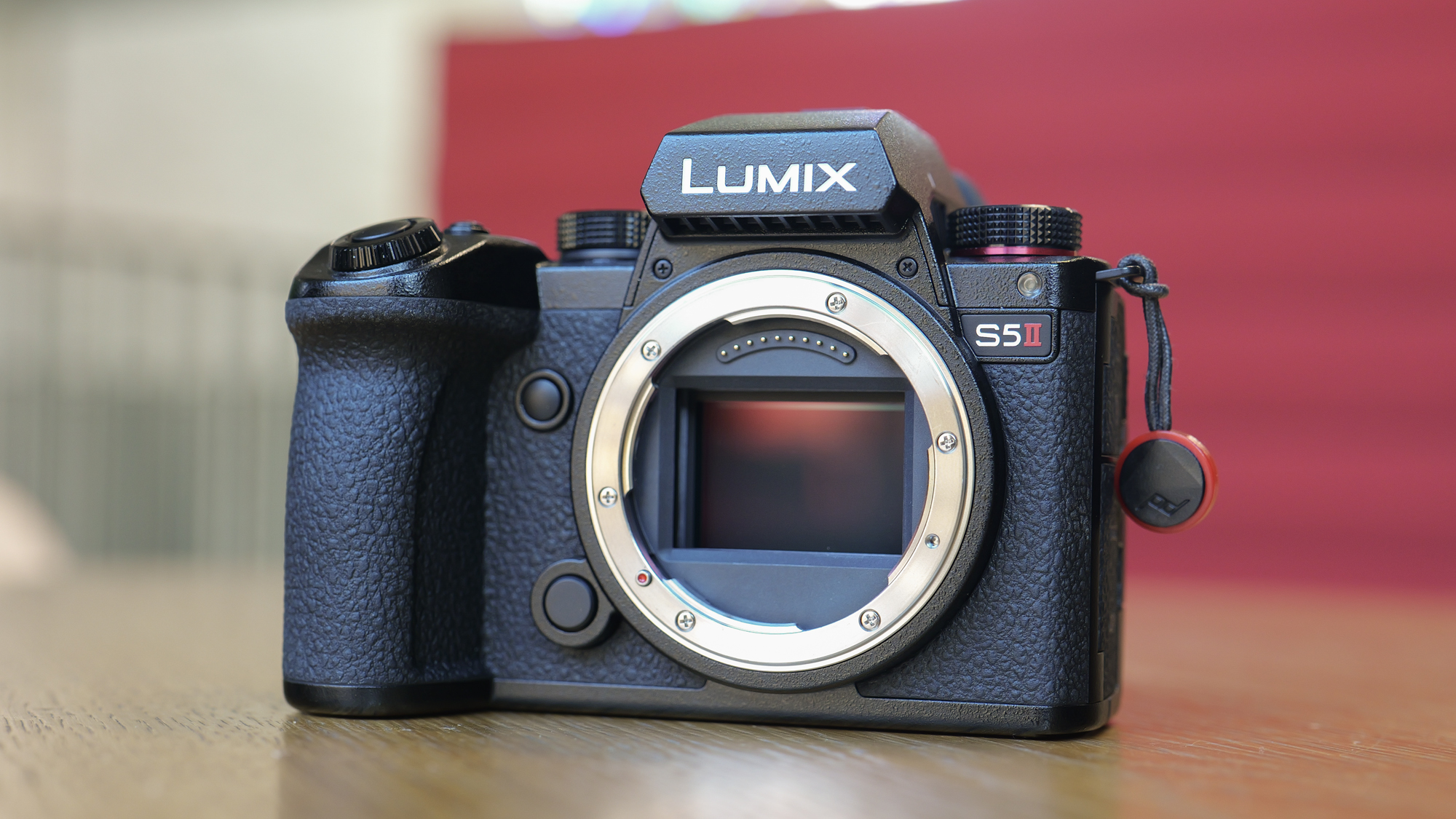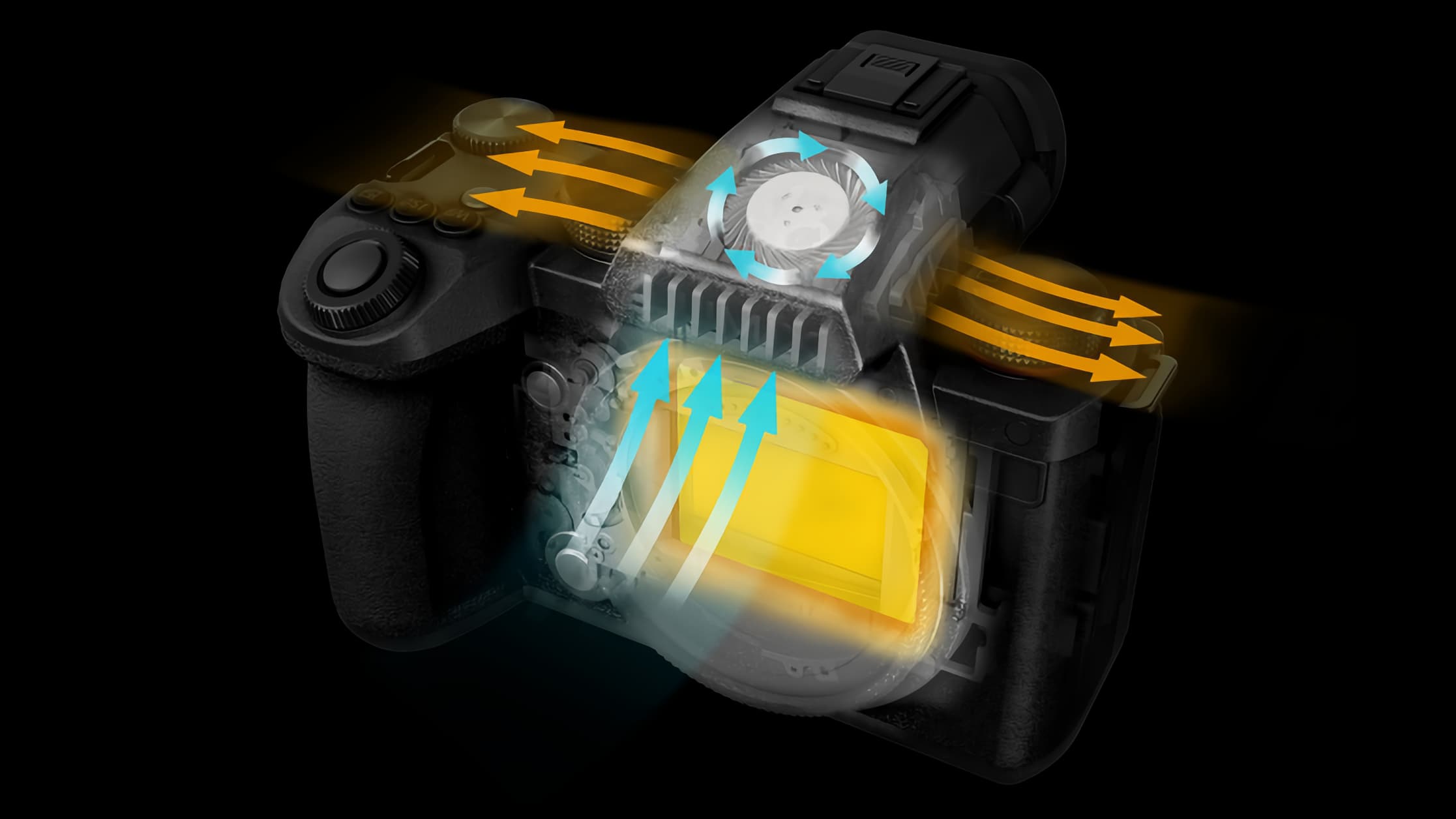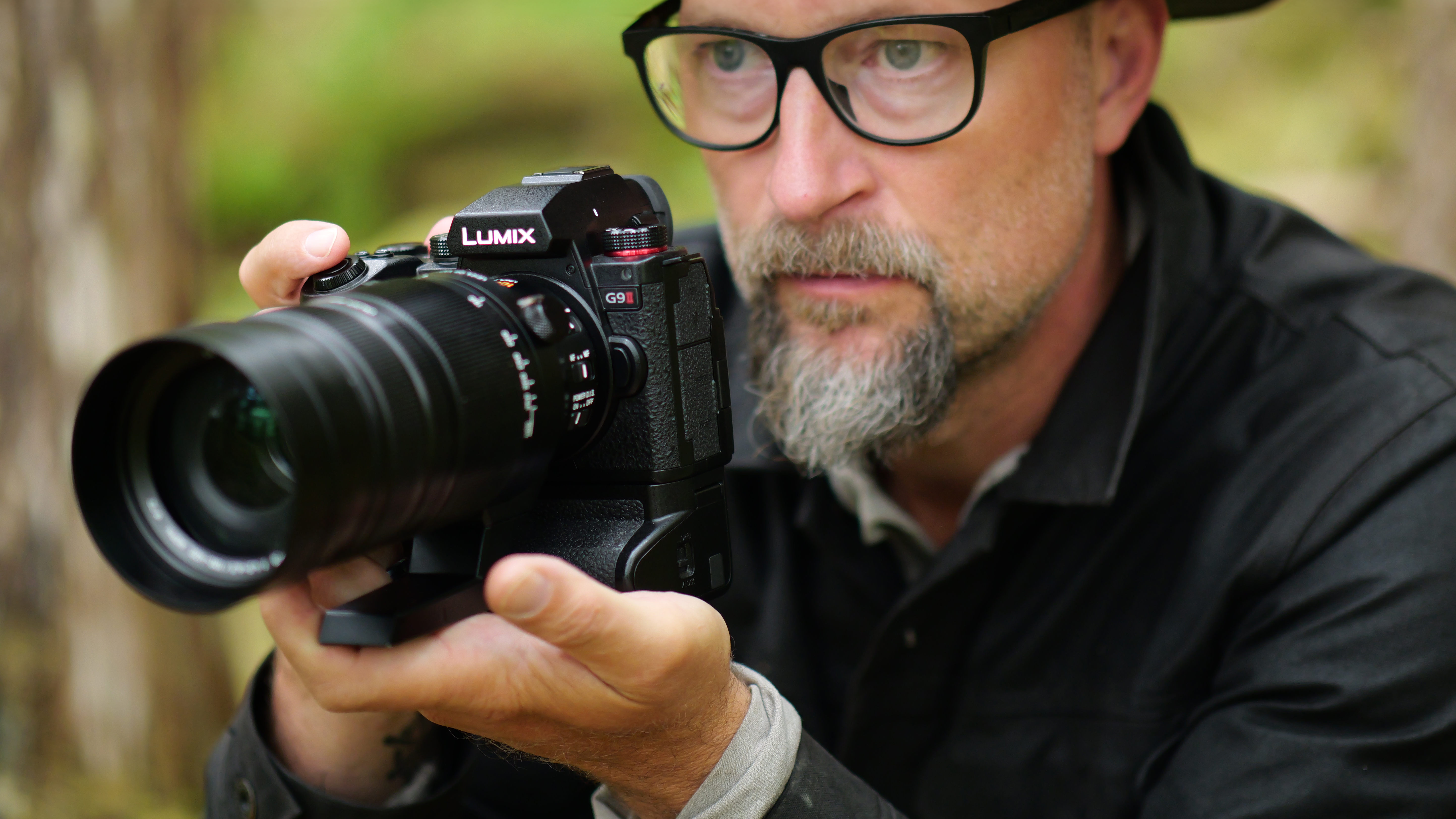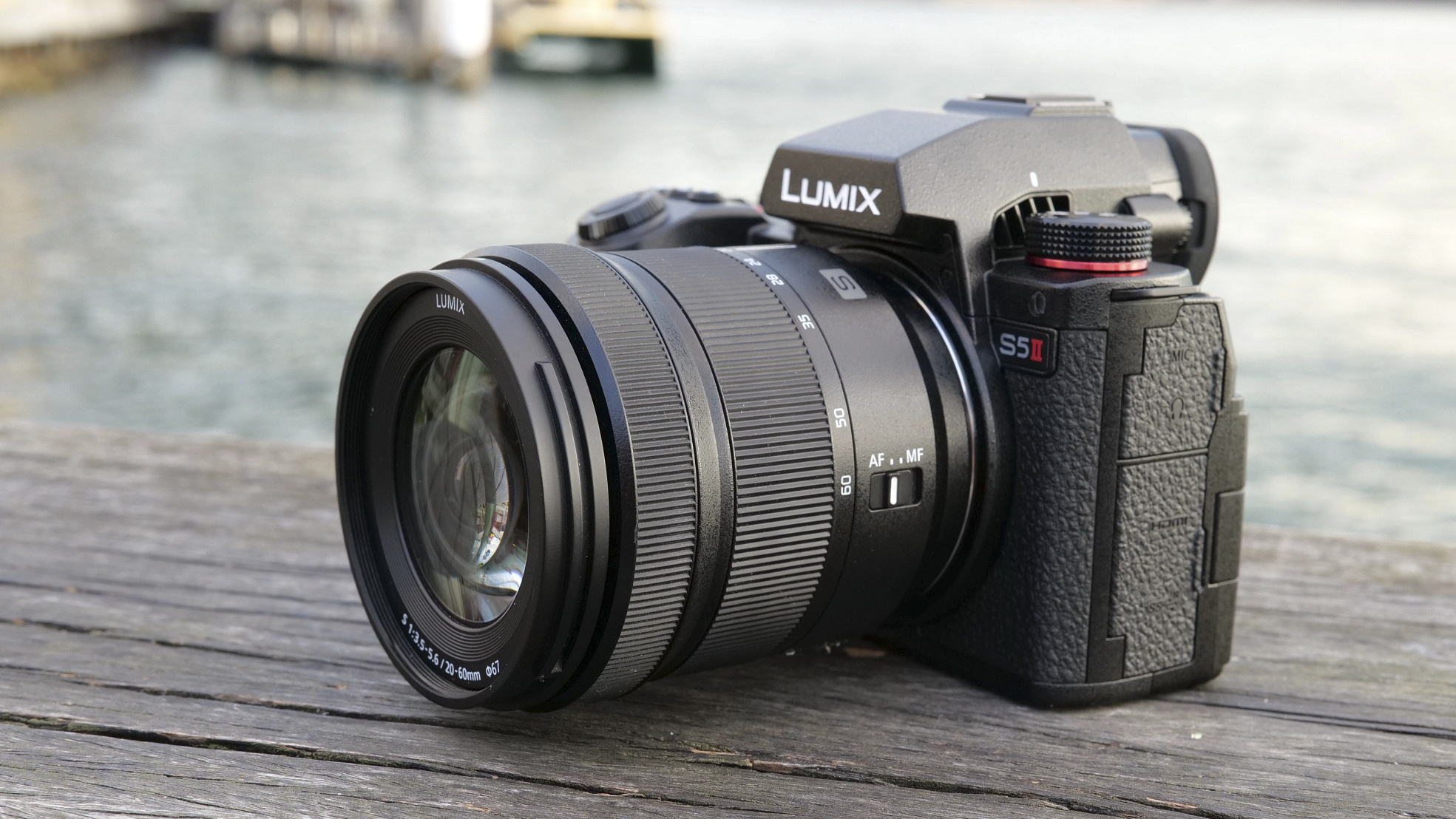Panasonic Lumix G9 II vs S5 II
These cameras look (and cost) the same, but our Panasonic Lumix G9 II vs Lumix S5 II comparison reveals key differences
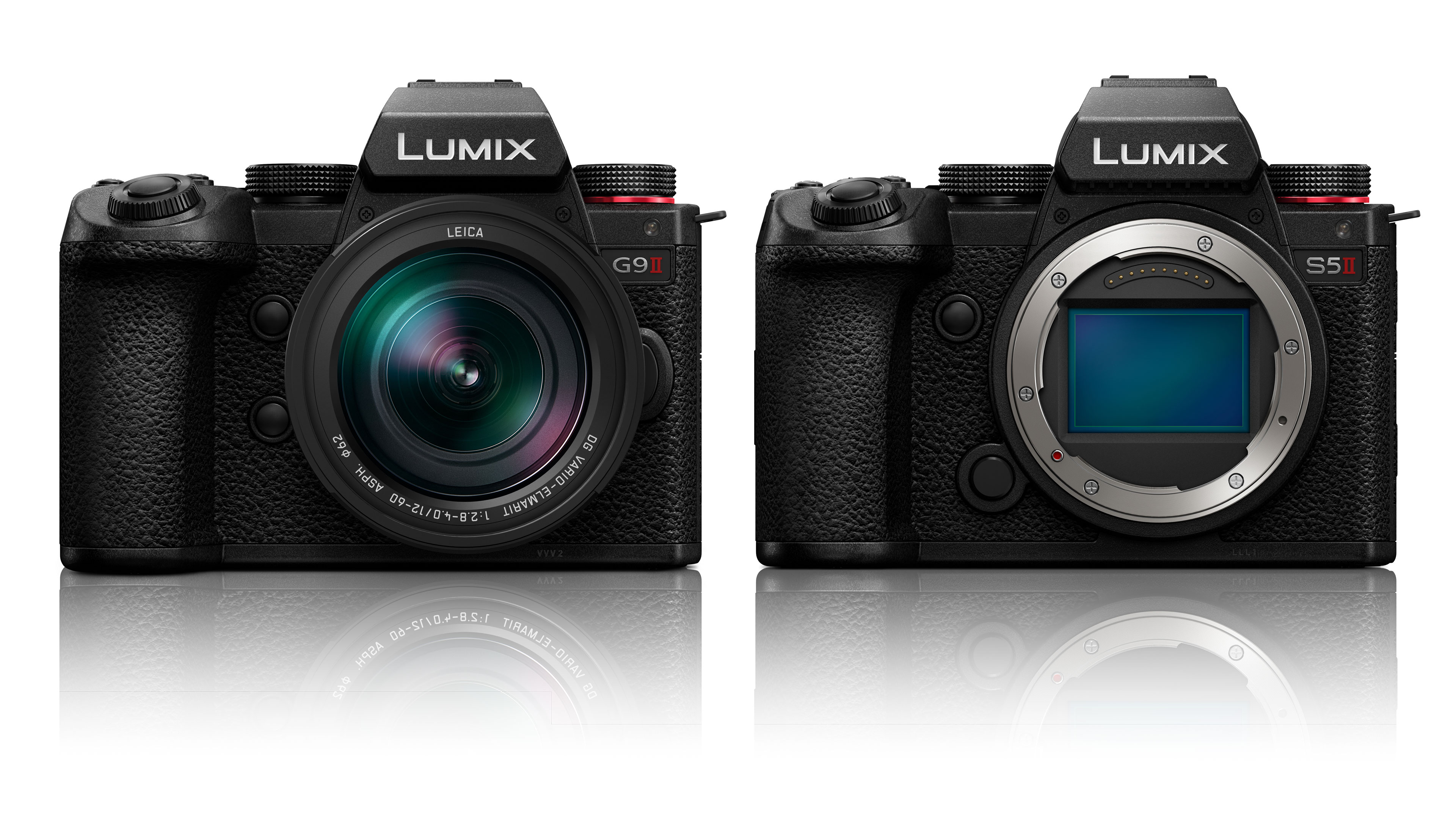
The launch of the Panasonic Lumix S5 II (and S5 IIx) caused quite a stir because Panasonic had at last added phase-detect autofocus to its full frame mirrorless cameras. People wondered when it would do the same for its Lumix G Micro Four Thirds models. We didn’t have to wait long. The Lumix G9 II has caused some perplexity, though, not least because of its design, which is almost indistinguishable from the Lumix S5 II, and its price, which is also very close to the S5 II.
These are both among the best Panasonic cameras today, but who would want to pay the same for a Micro Four Thirds camera as they would a full frame model? Our comparison reveals that there are reasons why the pricing is so close.
But all of this does leave camera buyers with some tricky decisions. Clearly on specs alone, the Panasonic Lumix G9 II and Lumix S5 II are amongst the best cameras for filmmaking, and the combination of IBIS, lens IS (where available) and Active I.S. should make them amongst the best cameras for vlogging, too.
Lenses are another factor. The best Micro Four Thirds lenses are certainly cheaper than their full frame counterparts, and while the best L-mount lenses are very good, there are fewer of them and they are generally bigger and more expensive.
What we’re comparing here are not just two cameras, but two systems – so let’s get started!
Panasonic Lumix G9 II vs Lumix S5 II in 2025
Why you can trust Digital Camera World
1. Lens mount
• Panasonic Lumix G9 II: MFT
• Panasonic Lumix S5 II: L-mount
These cameras really do highlight the dual nature of Panasonic’s Lumix camera line-up. The G9 II uses a Micro Four Thirds sensor, which is how Panasonic started out in mirrorless cameras, while the S5 II uses a full-frame sensor that's almost four times larger.
What’s key here is that there is no lens crossover between Panasonic’s Lumix G (MFT) and its Lumix S (full frame) cameras. There are currently no adapters for fitting Lumix G lenses to Lumix S bodies and vice versa. So while these cameras share a brand, a maker and many features and design similarities, they do belong to two separate systems.
The Lumix G9 II does have a smaller sensor, but it also has access to a wide variety of Micro Four Thirds lenses which are cheaper and lighter than full frame versions. The Lumix S5 II also has access to a growing number of full-frame L-mount lenses but there are fewer to choose from and they are considerably larger and heavier.
As camera systems, the Lumix G9 II and Lumix S5 II are closely matched. The Lumix G system is cheaper and broader, but the Lumix S system is arguably more desirable and gaining ground.
2. Sensor
• Panasonic Lumix G9 II: 25.2MP MFT Live MOS, no low pass filter, 100MP high-res
• Panasonic Lumix S5 II: 24.2 full frame CMOS, no low pass filter, 96MP high res mode
The Panasonic Lumix G9 II has marginally higher resolution than the Lumix S5 II, but it’s only a small difference of 1-megapixel which is hardly significant. What is significant is that the Lumix S5 II has a full frame sensor around twice the width and height of the G9 II’s MFT sensor.
In principle, this should mean that the Lumix S5 II produces less image noise at higher ISOs and should have superior dynamic range. There are implications for lenses and depth of field too. You will get much shallower depth of field with the Lumix S5 II when using lenses with equivalent angles of view. This is an advantage for creating depth and background blur but can also be a nuisance if you want maximum depth of field.
Most photographers, however, would prefer a larger sensor over a smaller one, so given the fact that these two cameras are practically the same price, this would seem a clear win for the Lumix S5 II.
3. ISO range
• Panasonic Lumix G9 II: ISO 100-25600, exp. 50-102400
• Panasonic Lumix S5 II: ISO 100-51200, exp 50-204800, Dual native ISO
The larger sensor in the Lumix S5 II does seem to pay dividends for sensitivity. It has a maximum ISO of 51200 in its standard range and 204800 in expanded mode, and these figures are one stop higher than the Lumix G9 II’s.
What’s more, the Lumix S5 II has dual native ISO circuitry which means that at higher ISOs a different gain circuit kicks in to offer lower noise. This is becoming increasingly common on video-centric cameras.
4. Autofocus
• Panasonic Lumix G9 II: 779-point phase hybrid AF, human body, animal eye, car/motorcycle recognition
• Panasonic Lumix S5 II: 779-point phase hybrid AF, AI-based recognition for humans (face, eyes, heads, and bodies) and animals (dogs, cats, and birds)
The big news with the Lumix S5 II was that Panasonic had at last moved on from its fast but flawed contrast based DFD autofocus system to employ the same kind of hybrid phase/contrast AF system as everyone else. That seemed to give it an edge over the Panasonic Lumix G cameras, but then the Lumix G9 II arrived with exactly the same hybrid phase/contrast autofocus.
5. Stabilization
• Panasonic Lumix G9 II: 5-axis, 8-stop IBIS, 7.5 stop Dual IS 2, Active I.S., advanced EIS
• Panasonic Lumix S5 II: 5-axis, 5 stop IBIS, 6.5 stop Dual I.S. 2, Active I.S.
The Lumix G9 II’s IBIS system does boast higher compensation values than the S5 II’s, perhaps because it’s a lot easier to stabilize a smaller sensor than a larger one. Both cameras have Panasonic’s Active I.S. digital stabilization which Panasonic says can steady video shot while walking, and the Lumix G9 II also has ‘advanced E.I.S.’.
6. Video
• Panasonic Lumix G9 II: 5.8K 30fps, C4K/4K 4:2:2 10-bit 60p, S&Q 120fps, V-Log, Real Time LUT, Apple ProRes, Long GOP or All-Intra, external/SSD recording
• Panasonic Lumix S5 II: 6K 3:2, 17:9. C4K/4K 30p full -width, 60p Super35/APS-C crop, FHD 120p, 10-bit 4:2:2, Long GOP only, unlimited 4K recording time via active heat dissipation, 14+ stops V-Log, 12-bit RAW over HDMI via Upgrade Software Key DMW SFU2 (sold separately), Real Time LUT
Video, as ever, is where things get complicated. Both cameras can shoot 6K video (actually 5.8K on the G9 II) and both can capture 4K at 30p or 60p. The difference is that the G9 II can shoot 4K 60p full width, while the S5 II has to drop down to a Super35/APS-C crop.
The Lumix S5 II has some other, possibly unexpected weaknesses. While the G9 II can capture video with Long GOP or All-Intra compression, the S5 II records internally in Long GOP only. And while you can record video to an external SSD with the G9 II, that’s not provided with the S5 II.
The powerful video features of the Lumix G9 II are a surprise given that Panasonic is pitching it as a stills-focussed camera. However, the Lumix S5 II does strike back in other respects, offering unlimited 4K recording thanks to its built in cooling fan and 12-bit RAW over HDMI, though with a paid software key upgrade.
7. Continuous shooting
• Panasonic Lumix G9 II: 14fps mechanical, 60fps with AF-C electronic shutter, 75fps with AF-S, 200+ JPEG, 170+ raw, pre-burst shooting
• Panasonic Lumix S5 II: 9fps, 7fps with AF-C (mechanical), 30fps electronic, 300+ JPEG, 200+ raw
The Lumix G9 II certainly wins for action photography and burst shooting, with its 14fps mechanical shutter burst speed and 60fps with its electronic shutter, and with continuous AF too. The Lumix S5 II does offer a somewhat higher buffer capacity, but probably due to its slower burst speeds of 9fps with the mechanical shutter (7fps with continuous AF) and 30fps with its electronic shutter.
8. Displays
• Panasonic Lumix G9 II: 3.68m dot OLED, 0.8x magnification, 3-inch vari-angle touchscreen, 1.84m dots
• Panasonic Lumix S5 II: 3.68m dot 0.78x magnification, 3-inch vari-angle touchscreen, 1.84m dots
Given the fact that the Lumix G9 II appears to use much the same body as the S5 II but with a smaller sensor, it’s no surprise to discover the EVF and rear LCD are effectively identical. The EVF of the Lumix S5 II offers a fractionally lower 0.78x magnification, but that’s too small a difference to notice.
9. Storage & battery
• Panasonic Lumix G9 II: 2x SD UHS II, 370 shot battery life, USB power supply, charging, battery grip DMW-BG1E
• Panasonic Lumix S5 II: 2x SD UHS II, 370 shot battery life, USB power supply, charging, battery grip DMW-BGS5
Both cameras offer dual SD UHS II card slots and use the same lithium ion battery. Even the 370-shot battery life is the same, and if you do need to shoot for longer periods, both offer USB power and charging via a USB power source or power bank. They can both be fitted with battery grips too.
10. Size
• Panasonic Lumix G9 II: 134.4 x 102.3 x 90.1mm, 658g
• Panasonic Lumix S5 II: 134.3 x 102.3 x 90.1mm, 740g
The Lumix G9 II and Lumix S5 II are exactly the same size, right down to fractions of a millimeter. The S5 II is significantly heavier, though, thanks no doubt to its full frame sensor and integral cooling fan. The different lens formats used by these cameras will play a part in their operational size and weight too, as the much larger full frame L-mount lenses for the Lumix S5 II will soon make it a bulkier and heavier system.
Panasonic Lumix G9 II vs Lumix S5 II: conclusions
• Panasonic Lumix G9 II: $1,897 / £1,699
• Panasonic Lumix S5 II: $1,997 / £1,749
What’s likely to surprise a lot of people is that the Lumix G9 II is the same size and practically the same price as the Lumix S5 II, despite having a much smaller Micro Four Thirds sensor. Either the G9 II is excessively expensive, or the Lumix S5 II is remarkably cheap, right?
Of course it’s not quite that simple. The Lumix G9 II is not that expensive for a flagship Micro Four Thirds camera – it’s cheaper than the OM System OM-1 – and it is an extremely powerful camera. Panasonic might think of it primarily as a stills camera, but the fact is its video capabilities in many ways outstrip those of the Lumix S5 II. The G9 II is also much faster for burst shooting, and the MFT format has gained a lot of traction in the bird/wildlife community thanks to some very good and very affordable super-telephoto optics.
If you’re already committed to a Micro Four Thirds system, the Lumix G9 II is the ultimate upgrade – more resolution, better AF, faster shooting, and high-powered hybrid video features. The Lumix S5 II is not a logical upgrade from a Lumix G camera at all, because there is no lens crossover – you would have to start again.
But if you’re looking for a combination of full frame quality, versatility and affordability, and you’re not yet committed to either the MFT or L-mount format, the Lumix S5 II looks the better bet. It costs no more than the G9 II but comes with the lure of full frame and a rounded feature set that will make it a great hybrid camera for all sorts of photographers and filmmakers.
Once you have chosen which Lumix camera is best for you, check out the best Micro Four Thirds lenses or the best L-mount lenses
The best camera deals, reviews, product advice, and unmissable photography news, direct to your inbox!

Rod is an independent photography journalist and editor, and a long-standing Digital Camera World contributor, having previously worked as DCW's Group Reviews editor. Before that he has been technique editor on N-Photo, Head of Testing for the photography division and Camera Channel editor on TechRadar, as well as contributing to many other publications. He has been writing about photography technique, photo editing and digital cameras since they first appeared, and before that began his career writing about film photography. He has used and reviewed practically every interchangeable lens camera launched in the past 20 years, from entry-level DSLRs to medium format cameras, together with lenses, tripods, gimbals, light meters, camera bags and more. Rod has his own camera gear blog at fotovolo.com but also writes about photo-editing applications and techniques at lifeafterphotoshop.com
